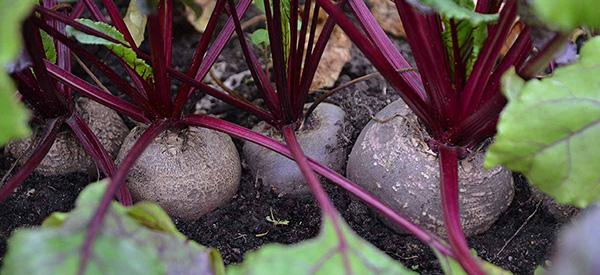
Beetroot
Beetroot (Beta vulgaris) is a root vegetable that is also known as beet, red beet, garden beet, or table beet. Although some enjoy these edible roots raw, many prefer them pickled or cooked. The leaves can be eaten, and the baby leaves are added to salads.
While the red beet is the most common, there are now several cultivars that are dark purple, pink, white or even yellow in color.
In addition to their use in cooking, beetroot has been used to dye cloth and for an herbal remedy. It is for its health-giving benefits that the beet is receiving renewed attention and popularity.
The history of Beetroot
Although beets are believed to originated and been domesticated in the Middle East, there are records of them being grown by the Ancient Egyptians, Romans, and Greeks. Beets are the time were black or white, not the red or purple we are familiar with today.
Initially, these plants were cultivated for their leaves. However, they were later grown for their roots too which, by the middle ages, were also used to treat illnesses affecting the blood and digestive system.
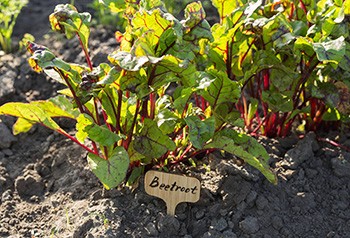
In the 15th century a yellow variety, known as mangels or mangel-wurzel, was used in Europe as fodder for livestock. European women in Victorian times used beetroot as a blusher, to redden their lips, and as a hair dye. In the 18th century, the Prussians had developed the original sugar beet which had a long, white taproot. Sugar beets are still widely grown and used.
This root vegetable was introduced to North America by European immigrants in the early 19th century. It was at this stage that the bulbous, red root vegetable we know today was cultivated. The crop began to be propagated from seeds, sold via catalog, and grown in gardens and on a commercial basis.
Where this plant is found
While Beta vulgaris may be native to the Middle East and Mediterranean region, it is also happy growing anywhere there are cooler growing conditions and is unfussy and hardy enough to cope with diverse soils and climates. As a result, beetroot has been naturalized in much of the US, northern and southern Europe, North Africa, Macaronesia, Western Asia.
Related: The Complete Map of Edible Plants: Find Out What You Have in Your Area! (Video)
How to identify Beetroot
This plant is an herbaceous biennial. In other words, it doesn’t produce woody stalks and completes its lifecycle over two years. Beets grow to a height of approximately 47 inches / 120 centimeters.
 Leaf: The lance-shaped, pointed leaves form a rosette at the base, and they are dark green with reddish veins. The basal leaves have long stalks. The upper leaves are variable in shape and far smaller.
Leaf: The lance-shaped, pointed leaves form a rosette at the base, and they are dark green with reddish veins. The basal leaves have long stalks. The upper leaves are variable in shape and far smaller.
- Stem: The leaf stems are long, thick, upright, and red, white, or yellow in color depending on the cultivar. The stems are red and ribbed or grooved. In the second year of growth a tall, erect stem grows and bears flowers.

- Root: The root is a taproot and globular or top-shaped. Other varieties, like Sugar Beets, have more tapered roots that are white or yellow. The roots are fleshy but become woody if they have been left in the ground too long. When cultivated, the top of the root is visible above the soil.
- Flower: The tiny, urn-shaped hermaphroditic flowers are green and form in small tight clusters up the flower stalk. Pollination occurs through the wind but primarily through insects.
 Seeds: The seeds, or seed balls, of the beet form in clusters of leathery pouches or cases. The seeds themselves are tiny, shiny, and reddish-brown in color.
Seeds: The seeds, or seed balls, of the beet form in clusters of leathery pouches or cases. The seeds themselves are tiny, shiny, and reddish-brown in color.
Identifying the beet plant does not usually present difficulties. This is in large part down to the fact that foraging for wild beetroot is most uncommon. We either grow it or buy it.
Get Your Own Medicinal Seeds, Last 30 Packs Left
How to Grow Beetroot
Although beetroot enjoys cool temperatures (59 – 66° Fahrenheit / 15 – 19° Celsius), they can’t tolerate severe frosts. These plants can cope with dry conditions, neutral or slightly alkaline soil is best for them, and they require sun.
Beets are grown from seeds, although there is the option of buying seedlings from a garden center. If you opt to grow from seed:
- Presoak the seeds for 12 hours to speed up germination
- Only plant seeds when the soil temperature is higher than 45°Fahrenheit / 7° Celsius
- Prepare the soil by loosening it well, removing any large stones that may inhibit root growth, and digging in a generous amount of organic matter
- Plant seeds ½ inch / 1 ¼ centimeter deep, 5 inches / 12 ½ centimeters apart
- If you plant multiple rows, they should be 10 inches / 25 ½ centimeters apart

- Germination takes 5 – 10 days
- Seeds must be kept damp
- If you accidentally sow too many seeds, you can thin out the seedlings when they are about 1 inch / 2 ½ centimeters high
- It is possible to plant batches of seeds two weeks apart so that you have an ongoing crop and not all the beets are ready at the same time.
You can also add a layer of mulch to retain moisture. Beetroot requires constant moisture; water every 10 days during dry weather. If the plants are too dry for too long, the roots become stringy and may even split.
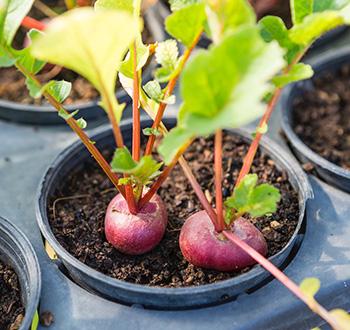
It should be noted that beets grow well in containers too.
The primary problem with growing this root vegetable crop is bolting. This happens when the plant flowers and goes to seed too early and the energy goes to them and not to the root. The best way to prevent this is to:
- Plant at the right time so that the weather does not become too warm (over 800 Fahrenheit / 260 Celsius). Plant at the latest 2 – 3 weeks after the last frosts
- Ensure the plants have enough food by using compost when planting. You can also add fertilizer or compost later if the plants seem to be struggling
- Keep the soil moist and weed-free.
Like all plants, beetroot may attract pests. Keep an eye on your crop and deal with ‘invaders’ in an appropriate way.
How to harvest this plant
Young leaves can be harvested at any stage if you leave enough foliage on the plant to keep it healthy. However, beet greens are best when the leaves and stalks are 4 – 6 inches / 10 – 15 ½ centimeters tall.
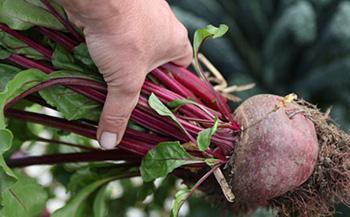
There are two options when it comes to pulling the plants to harvest the roots. You can either remove all the plants or remove every alternate one when they are 1 ½ inches / 4 ¼ centimeters in diameter and then harvest the rest when they reach 2 ½ inches / 6 ¼ centimeters in diameter. If they grow any larger, they may become very fibrous.
There are some useful tips about beet harvesting:
- Grasp the plant by the stalks just above the root and pull
- Twist the foliage off about 2 inches / 5 centimeters above the root so the base of the stalks remains. This prevents bleeding from the root
- Wash and dry the beets thoroughly
- If you are not using them immediately, they can be stored in plastic bags in the refrigerator.
Fresh beetroot can be used raw or cooked in various ways or turned into a juice or smoothie.
What Beetroot is good for & the natural remedies made from it
This colorful and tasty root vegetable is packed with health-giving ingredients:
- Antioxidants
- Betacyanin

- Betaine
- Calcium
- Copper
- Dietary fiber
- Folate
- Inorganic nitrates
- Iron

- Magnesium
- Manganese
- Phosphorus
- Potassium
- Riboflavin
- Selenium
- Silica
- Thiamine
- Vitamins A, B-6, B-9, and C.
These compounds and elements, either together or singly, appear to offer a range of health-boosting effects:
- Lower blood pressure
- Reduce blood glucose levels
- Boost stamina and energy levels
- Decrease inflammation
- Improve digestive health and bowel regularity
- Boost brain health by improving blood flow
- Assist with weight loss.
While the studies are very much in their infancy, there is some tentative early evidence that beetroot may help to reduce the chances of developing cancer.
What parts of the plant are used in remedies?
Although the leaves are healthy and were even used by the Romans to cover wounds, and seed decoctions can be used, it is the root of Beta vulgaris that offers the most benefit and is used in health-promoting preparations.
A DIY beetroot recipe
The most popular way to enjoy the benefits of beet daily is by making and drinking beetroot juice. There are several reasons. Firstly, it is good for your digestive system and energy levels, and it’s a powerful antioxidant. Secondly, it’s easy to make and, finally, it tastes good.
Ingredients
- 1 small red beetroot
- 1 large or 2 small apples
- ½ fresh lemon or lime
- 2 celery stalks (optional)
- 1 medium carrot (optional)
- ½ inch piece of peeled ginger (optional)
Method
- Wash and dry all the ingredients
- Peel the beetroot (and carrot if you are using one)

- Cut the beetroot (and carrot and celery) into long pieces

- Cut up the apple and remove the core

- Place all the vegetables and fruit (except for the lemon/lime) into the juicer/blender in random order so not all the pieces of the same vegetable or fruit are together

- Process the ingredients until you achieve the desired thickness of the juice
- If you use a liquidizer/blender, pour the liquid through a strainer to remove the pulp and press the pulp to remove any remaining juice
- Squeeze in the lemon juice and stir the mixture.

This is not a complicated recipe, but here are a few tips to make life even easier:
- Beetroot contains a natural dye that will stain your kitchen worktop, clothes, and skin if you aren’t careful. Protect surfaces if you need to and wear an apron and gloves. If you are careful, you can of course prevent a mess!
- You can use a blender or a juicer. A juicer will involve less work as you won’t need to strain the mixture. It will also produce more nutritious juice. If you don’t have one, a blender/liquidizer is fine.
- Beet juice on its own is powerful and can have undesirable effects such as causing red urine and/or feces. It’s, therefore, a good idea to add other vegetables such as celery or carrots.
- Take the time to experiment with flavor and find the combination your tastebuds enjoy. Ginger is not popular with everyone, and some prefer more tart to sweeter apple varieties, for instance. You could add berries or cucumber… etc.
Only make as much juice as you are going to drink as the nutrients and active ingredients degrade over time. If refrigerated, the juice won’t spoil in a hurry, but it will lose potency.
Dosage
A glass of beetroot juice can be enjoyed every morning instead of a more traditional fruit juice.
Related: 1 Cup Before Bed Shrinks Belly Fat All Night (Video)
How to preserve this plant
Once harvested, you need to wash the beets gently but thoroughly in cold water. It’s important not to damage or break the skin or the roots ‘bleed’. If you want to store beets longer term, you can:
 Freeze cooked beetroot and it will retain both flavor and texture. Raw beets do not react well to being frozen; they won’t spoil but they won’t be enjoyable to eat.
Freeze cooked beetroot and it will retain both flavor and texture. Raw beets do not react well to being frozen; they won’t spoil but they won’t be enjoyable to eat.- Pickled beets are also an option. There are numerous recipes online, and pickled beetroot usually has a shelf-life – if refrigerated – of 6 to 8 months.
- Cold storage during the winter months allows you to store beets for 2 to 3 months. Use only undamaged beetroots and remove the greens but leave ½ inch / 1 ¼ centimeters of the stalk. Place the beets in layers in a box that contains damp sand or sawdust. Cover the box with a tight-fitting lid to retain the moisture and store it in a shed, basement, or attic where it stays cool (32 – 40° Fahrenheit / 0 – 4° Celsius).
While fresh is best, this way you can extend the length of time each year that you can enjoy beetroot.
What plants resemble Beetroot?
The primary confusion – if there is any – is with other members of the Beta vulgaris group and varieties or cultivars. The Rhubarb is another look-alike, though.
| Feature | Beetroot / BeetBeta vulgaris | Swiss Chard / Silver BeetBeta vulgaris var. cicla | RhubarbRheum rhabarbarum |
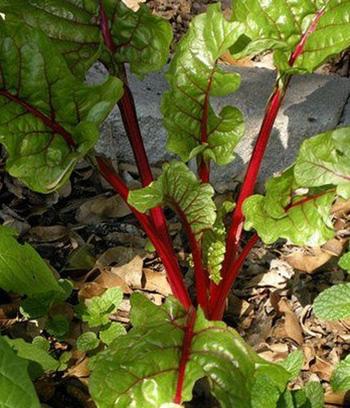 |
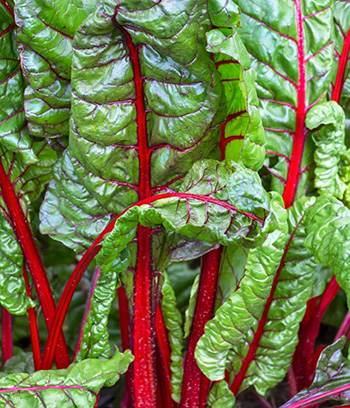 |
 | |
| Size | Height up 47 inches / 120 centimeters. | Height up to 24 inches / 61 centimeters | Height up to 48 inches / 125 centimeters |
| Stalks | Thick; ribbed/grooved; red, white, or yellow depending on the cultivar | Broad; red, green, or white; grooved and curled over like celery; slightly haired | Thick, fleshy, grooved, red or green, tart flavor |
| Leaves | Edible, lance-shaped, pointed leaves, dark green with reddish veins | Edible, lance-shaped, large, very crinkled, dark green with a midvein the same color as the stalk | Inedible, large, triangular / heart-shaped, crinkled |
| Root | Edible, fleshy tap root, globular or top-shaped | Inedible, fleshy, thin, and tapering taproot | Inedible, thick rhizome that grows horizontally |
| Flowers | Tiny, urn-shaped, green, hermaphroditic, form in small tight clusters | Clusters of small yellow flowers along the end of flower stalks | Hollow flower stalk, hundreds of white flowers tinged with pink as buds |
It is the root and flower that most help to differentiate, although the chard’s spinach-like leaves are also helpful.
Warnings and cautions
Beetroot does not usually cause problems, but consuming large amounts can cause the urine and/or stool to turn red, pink, or purple which can be alarming. In addition, there are certain individuals that should be cautious:
- Those on a low potassium diet such as patients with kidney problems
- Individuals on medication for high blood pressure
- Diabetics on medication
- People prone to digestive upsets or with conditions such as IBS.
It’s always a good idea to check with your healthcare provider before including something like a regular addition to your diet if you suffer from a current medical condition or are on medication.
You may also like:
 DIY Colon Detox with Ingredients You Have in Your Kitchen Right Now
DIY Colon Detox with Ingredients You Have in Your Kitchen Right Now
Erratic Blood Sugar? Never Eat This Veggie (Video)
Homemade Juice For Blood Pressure
How To Make Your Own Probiotics
9 Natural Remedies that People with Diabetes Will Find Useful






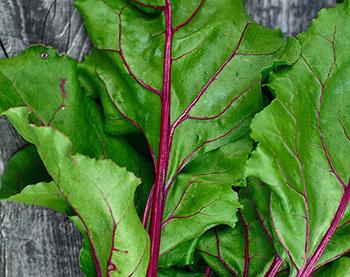 Leaf: The lance-shaped, pointed leaves form a rosette at the base, and they are dark green with reddish veins. The basal leaves have long stalks. The upper leaves are variable in shape and far smaller.
Leaf: The lance-shaped, pointed leaves form a rosette at the base, and they are dark green with reddish veins. The basal leaves have long stalks. The upper leaves are variable in shape and far smaller.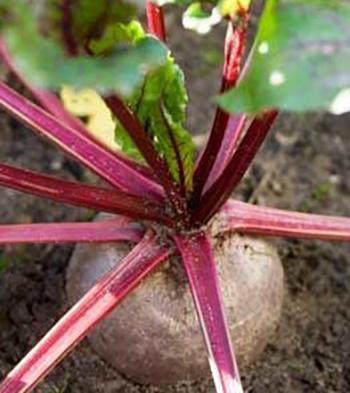
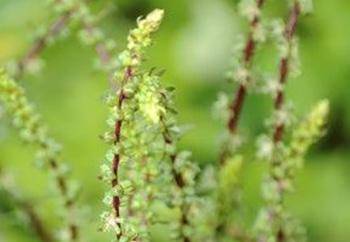 Seeds: The seeds, or seed balls, of the beet form in clusters of leathery pouches or cases. The seeds themselves are tiny, shiny, and reddish-brown in color.
Seeds: The seeds, or seed balls, of the beet form in clusters of leathery pouches or cases. The seeds themselves are tiny, shiny, and reddish-brown in color.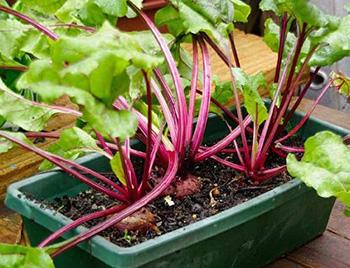
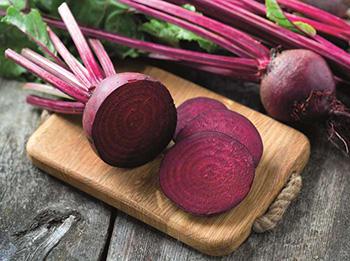
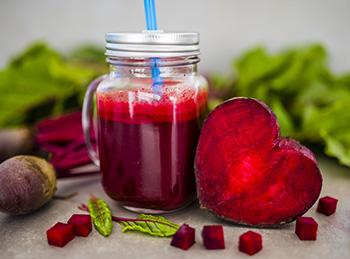
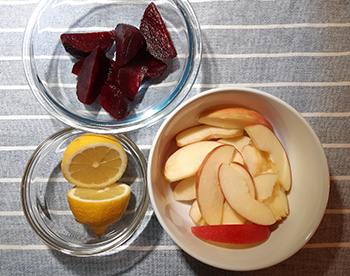
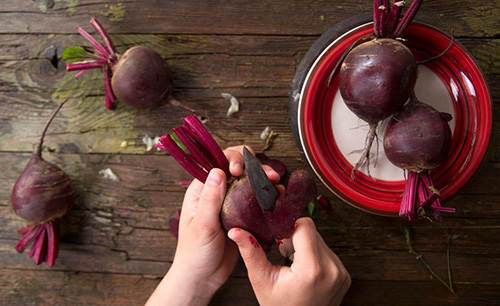
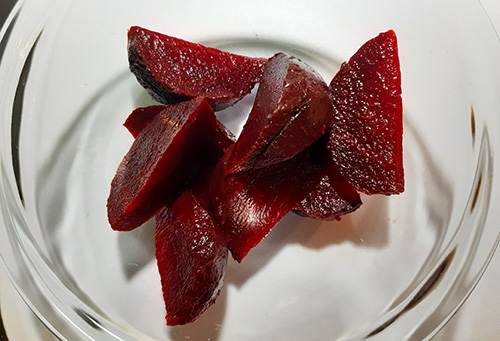
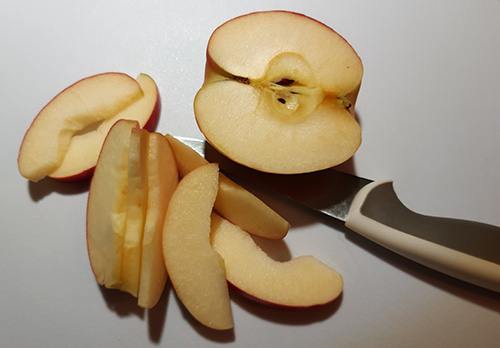
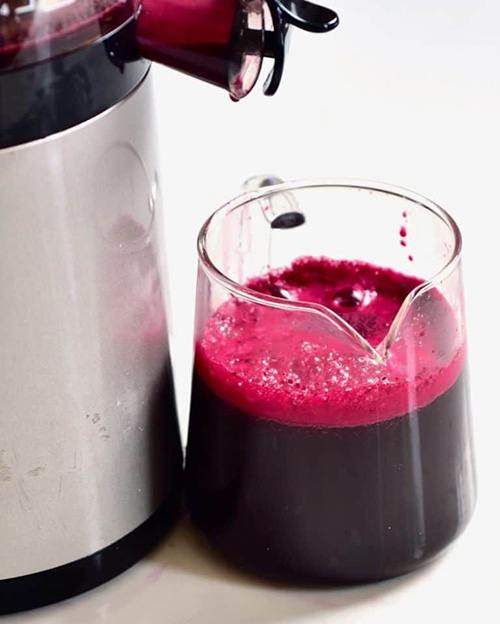
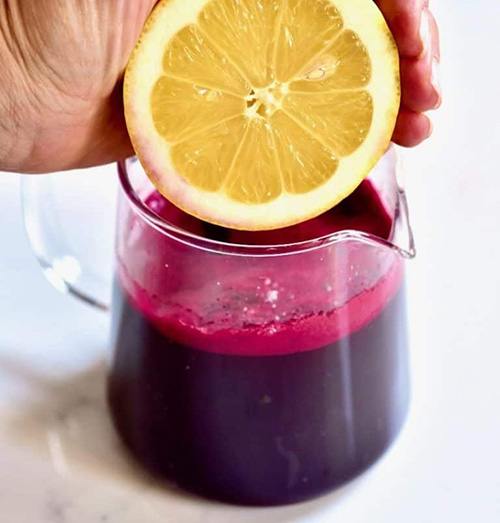
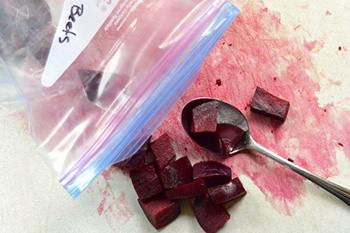 Freeze cooked beetroot and it will retain both flavor and texture. Raw beets do not react well to being frozen; they won’t spoil but they won’t be enjoyable to eat.
Freeze cooked beetroot and it will retain both flavor and texture. Raw beets do not react well to being frozen; they won’t spoil but they won’t be enjoyable to eat.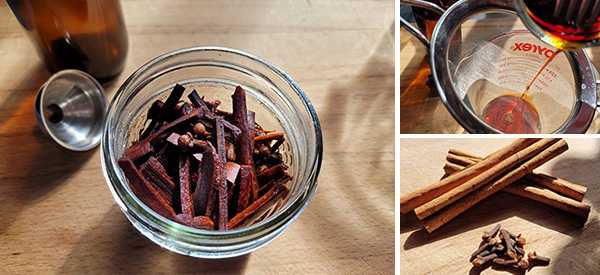
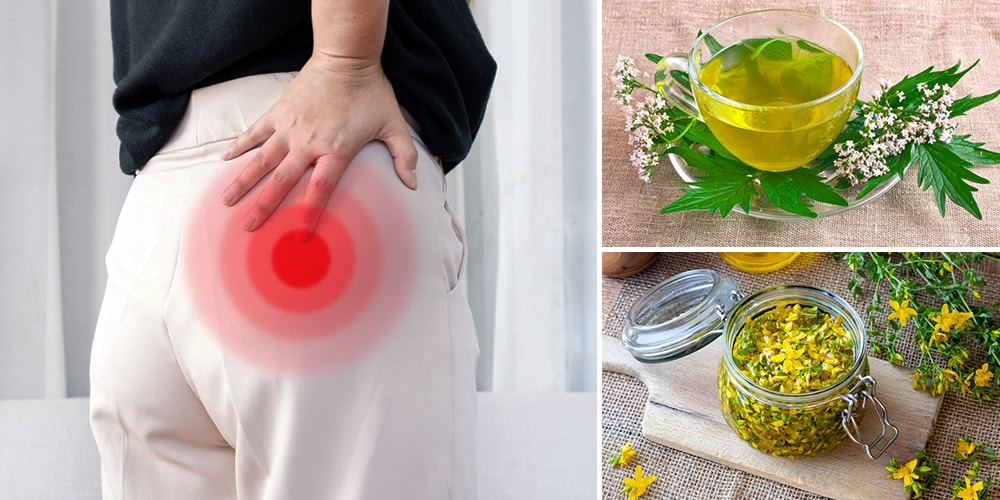
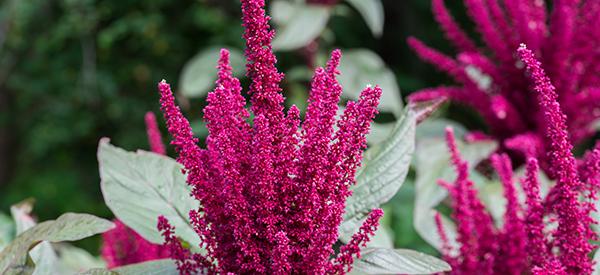
I always made a cough syrup out of beetroot but I can’t wait to try this recipe!! Thanks for this awesome article!
Eliza: What is your recipe for the cough syrup. I’d like to try it. Thank you.
I make the one my mom used to make when I was young! Cut up a hole in the beetroot, place some sugar or honey in the hole and let it sit in the fridge during the night. And there you have it! You’ll wake up to half a cup of super sweet and effective cough syrup!! Hope this helped!
You speak truth. We use this same syrup recipe in southeast europe.
But no need to put it in the fridge-better if not cold.
Also, honey is much better than sugar. Honey in itself is healing, and good for cought.
In addition to my other comment, we normally poke a small hole in the bottom of the beetroot, and let it sit in a glass. overnight, the honey drains down through the hole, into the glass, and you have cough syrup!
I am finding conflicting oxalate content of beets. Some charts show medium, some very high. I have had to move to a low oxalate diet due to calcium oxalate kidney stones. I miss the beet row in my garden, having cut beet consumption to half a beet per week in keeping below 50mg of oxalate a day from all foods and drinks. I sure do appreciate this website and the great work you do.
Jim you might want to look into “Malic Acid.” It is found in apple juice/apple cider or it can be taken in capsules from a health food store. Either drinking a litre of apple juice a day OR taking 3 capsules of Malic Acid twice a day will “SOFTEN” these stones. By day six you can follow the recipe for a safe liver/gall bladder/kidney flush. I would recommend THE AMAZING LIVER FLUSH by Adreas Moritz. It has saved the lives of millions from unnecessary surgery for stones. Hope that helps! God bless you.
I really like all the information that you give to all of us every day. However I disike the videos saying just do this and after a very long video it is for tablets, not what I was expecting as it not in line with your bog.
Hi Karen,
Thank you so much for your comment.
The videos are not mine or made by me. They belong to some of my sponsors.
I always choose our sponsors based on their products. I know that some videos are pretty long and controversial. But the most important thing for me is to make sure that the products they are selling are OK.
I have modified your subscription and from now on you will only receive our articles; no commercial email whatsoever.
God bless!
Can the beetroot juice be frozen to use later and will it retain the nutrients if frozen?
Hi Donna,
Juices stay fresh in the refrigerator for only a few days, so if you want to extend their shelf life by several months, you can freeze the juice. However, enzymes in fruits and vegetables can cause nutrient and quality loss during freezing.
God bless!
I suggest only make as much juice as you are going to drink as the nutrients and active ingredients degrade over time. If refrigerated, the juice won’t spoil in a hurry, but it will lose potency.
Has anyone freeze dried beets, if so how do they re-hydrate??
I’m not clear on the move too fast, or too slow introduction. Didnt see explanation in beet article. Could you clarify, please?
Hi Pam,
“Move too slowly” =Don’t drink the juice long after you make it, as it will lose the nutrients. Only make as much juice as you are going to drink and drink immediately.
“Move too fast”: Beet juice stains on clothing, upholstery, and carpet can be very difficult to remove. So it’s better to not rush when you prepare your juice. Protect surfaces if you need to and wear an apron and gloves. If you are careful, you can of course prevent a mess!
God bless!
Hi John,
You can simply put the dehydrated beets in boiling water and boil them for some time.
God bless!
Sorry, I was asking on Freeze Dried not Dehydrated. Ive tried the Dehydrated and didn’t care for them. We are trying a load in the freeze dryer and will post how they turn out. Would love to have Beets in 25yrs!!!
I ordered the book and received it. But the other books that I bought haven’t arrived. Could you let me know why.
Hi Seanne,
Thank you for your interest in our work.
Please check your personal email. I have sent you an email with the details about your book order.
God bless!
I absolutely love your posts as they I sharpen or correct things I may know and then I learn so many new & important details. It makes me inspired to try your ideas. Thank you for your detailed posts – they are so helpful.
Hi Alexis,
Thank you so much for your feedback. We really appreciate it!
God bless!
love what you put up
Hi Barry,
Thank you for your comment.
We are glad to hear you love our posts.
God bless!
Can you please modify my email. I also don’t like receiving video where they sell things that I won’t be using. Otherwise, I love your site.
Hi Blanca,
Your subscription was modified, as per your request.
From now on you will only receive our articles and no commercial email whatsoever.
God bless!
You really need to proof your articles before you post them.I find the following three statements to be extremely unsound (the temperatures are wrong!)
“Although beetroot enjoys cool temperatures (59 – 660 Fahrenheit”
“Only plant seeds when the soil temperature is higher than 450 Fahrenheit”
“store it in a shed, basement, or attic where it stays cool (32 – 400 Fahrenheit”
212F is BOILING!!!
Hi Carol,
Thank you for your feedback.
I have reread the article and the information seems to be correct.
This is how it shows for us. “Although beetroot enjoys cool temperatures (59 – 60° Fahrenheit / 15 – 19° Celsius)”.
We used the degree symbol or degree sign – ° which unfortunately might not be available on all phones or computers and it will be seen as a 0.
Many blessings and good health!
I think a lot of these articles are written by foreigners so I don’t believe everything that is posted here.